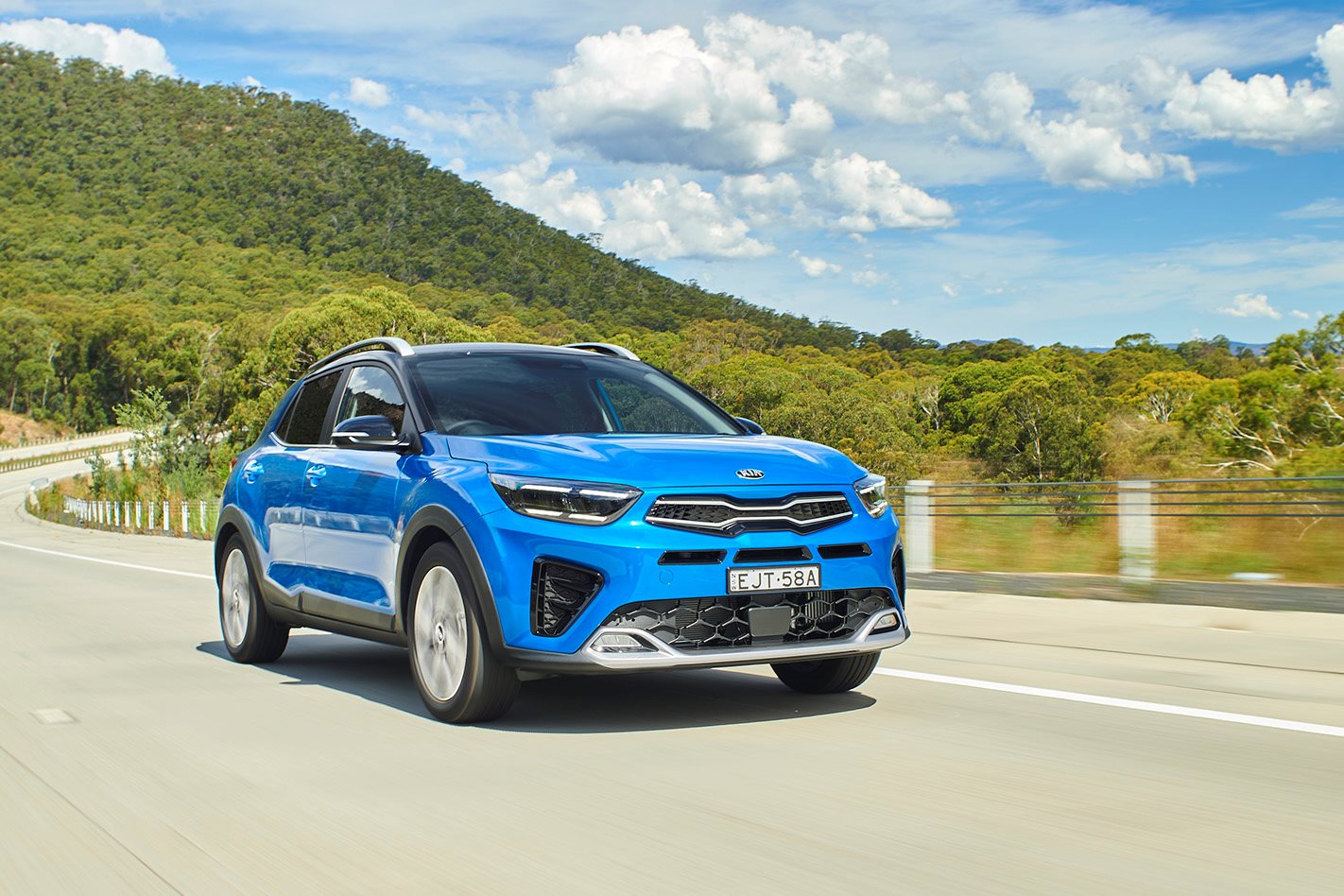
What is the Kia Stonic GT-Line?
This is the range-topping version of Kia Australia’s first light SUV introduced to compete against the likes of the Mazda CX-3 Maxx Sport, Toyota Yaris Cross GXL and Ford Puma.
Based in the Kia Rio light hatchback, the Stonic has actually been available overseas since 2017 but recently underwent a significant mid-life facelift meaning it has arrived here fresh and with everything you’d expect from a new small Kia.
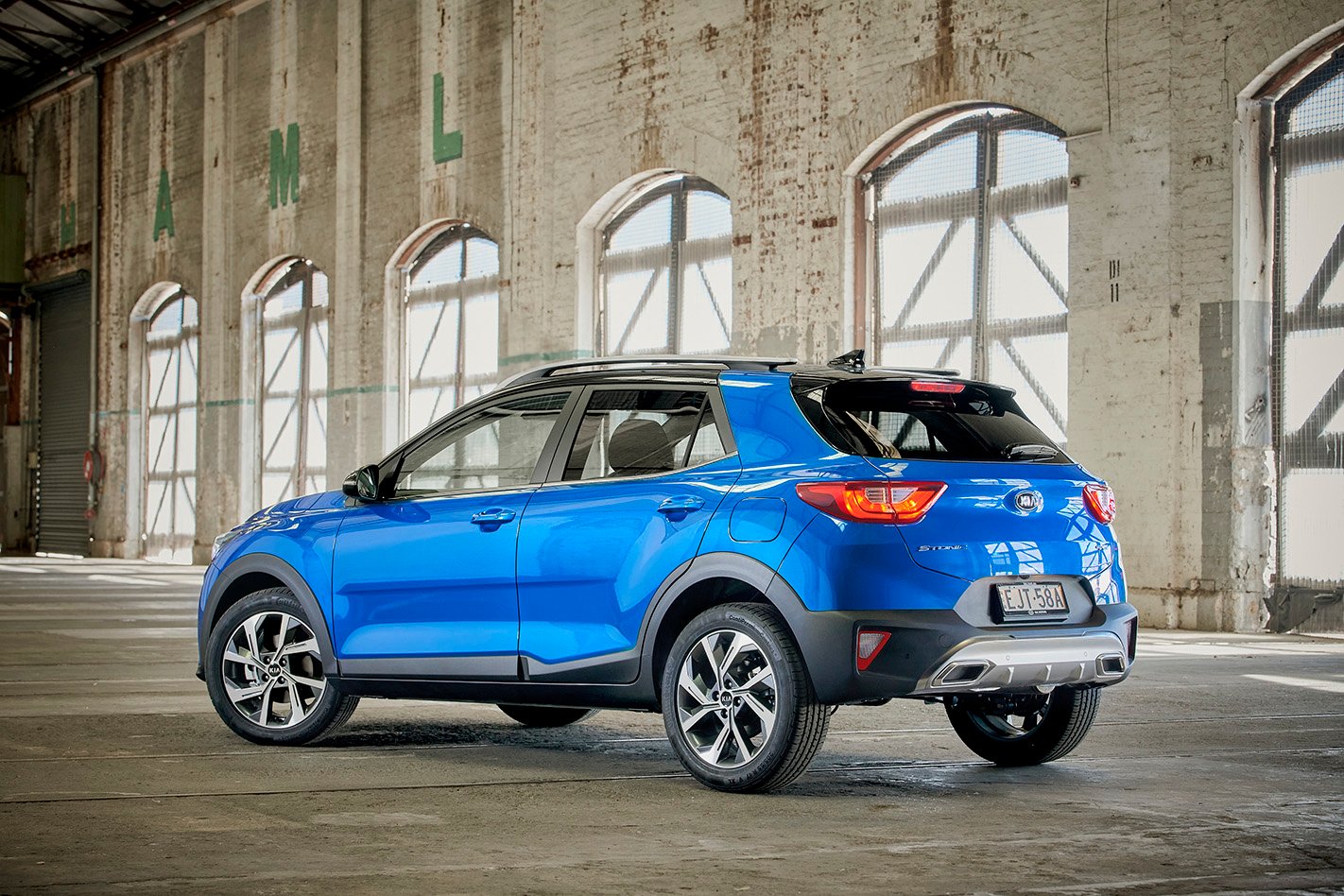
Priced from $21,490, the Stonic comes in three variants, including the S and Sport that share the Rio’s rather tame 1.4-litre four-cylinder petrol engine, with a choice of six-speed manual and six-speed auto.
The GT-Line, on the other hand, offers a little more driver enjoyment in the form of the Rio GT-Line’s punchy little 1.0-litre three-cylinder turbo that’s coupled with a seven-speed dual-clutch auto.
Kia Stonic GT-Line spec details
The GT-Line’s three-cylinder turbo produces the same power as the S and Sport’s 74kW/133Nm 1.4-litre engine but dishes out 172Nm of torque.
The powertrain is the only mechanical difference from the Stonic Sport, which is priced at $24,990 and $25,990 for the manual and auto respectively, and which rides on the same 17-inch wheels and suspension set up.
The GT-Line does come with more athletic body styling, however, that includes a chrome-trimmed Tiger grille and silver-lower bumper plus sharper-looking LED bi-function headlamps, LED daytime running, LED strip fog-lamps.
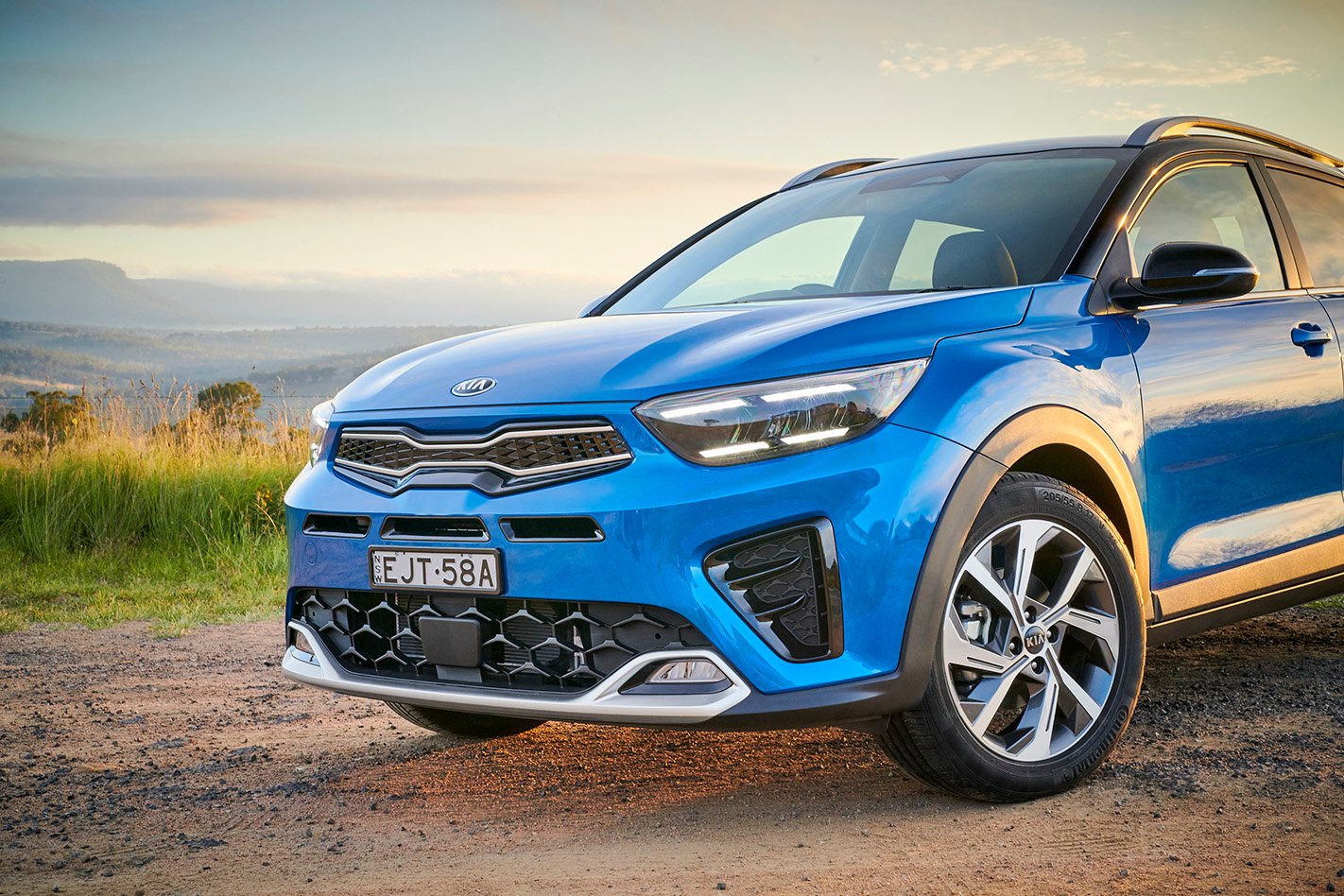
Other extras include three driving modes – Eco, Normal, and Sport – ‘premium’ seats, sports steering wheel, auto-dimming rear-view mirror, alloy sports pedals, faux carbon-fibre dashboard fascia.
That’s on top of other features also found in the Sport including two-zone climate-control with auto defog system that detects fogging on the windscreen and automatically activates the air conditioning to clear it.

All Stonic models come with an 8.0-inch infotainment system that can sync devices via Apple CarPlay and Android Auto, and multi-connection Bluetooth that allows one person to use their phone for music while the other takes calls.
The standard driver assistance suite includes autonomous emergency braking with pedestrian and cyclist detection that works to prevent or mitigate a collision at speeds up to 180km/h, lane-keeping assist, lane following assist, driver attention alert, and leading vehicle departure alert that gives you an audible nudge when the car in front of you drives off from the lights while you’re daydreaming. Adaptive cruise control is a notable omission.
It doesn’t come with ANCAP safety rating as only the 1.4-litre versions have been assessed, though it’s worth noting their five-star rating dates back to 2017 and was achieved by technically being a variant of the Rio.
What don’t we like about the Kia Stonic GT-Line?
While it has undergone a mid-life facelift, the Stonic GT-Line doesn’t feel as sophisticated as fresher Kia models such as the Seltos small SUV.
Strangely, the Stonic is one of the few cars available with convenient wireless Apple CarPlay technology, but that’s only available in the entry-level Stonic S meaning you’ll still have to fiddle with a USB cable in the Sport and GT-Line despite paying more.
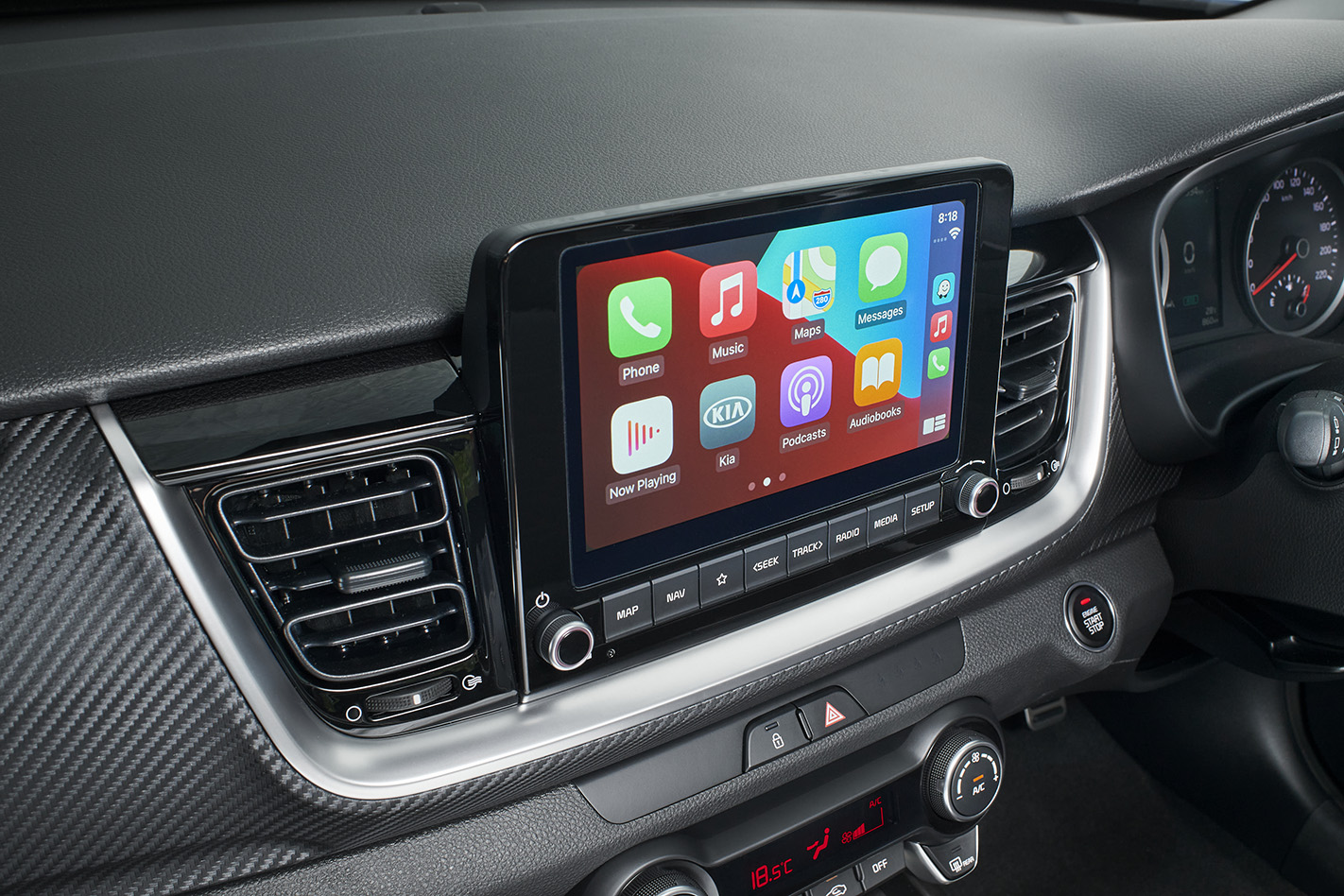
Kia says this is because these pricier variants have in-built satellite navigation, 10-year Mapcare and SUNA traffic services support. It seems this is more of a licensing issue than anything technical.
On the road, the 1.0-litre turbo is quite thrashy from a standing start until you reach about 1500rpm.
Driving the Kia Stonic GT-Line
The 1.0-litre turbo this is a lively little engine that makes for fun driving whether you’re in the Stonic’s native urban environment or out on a country road.
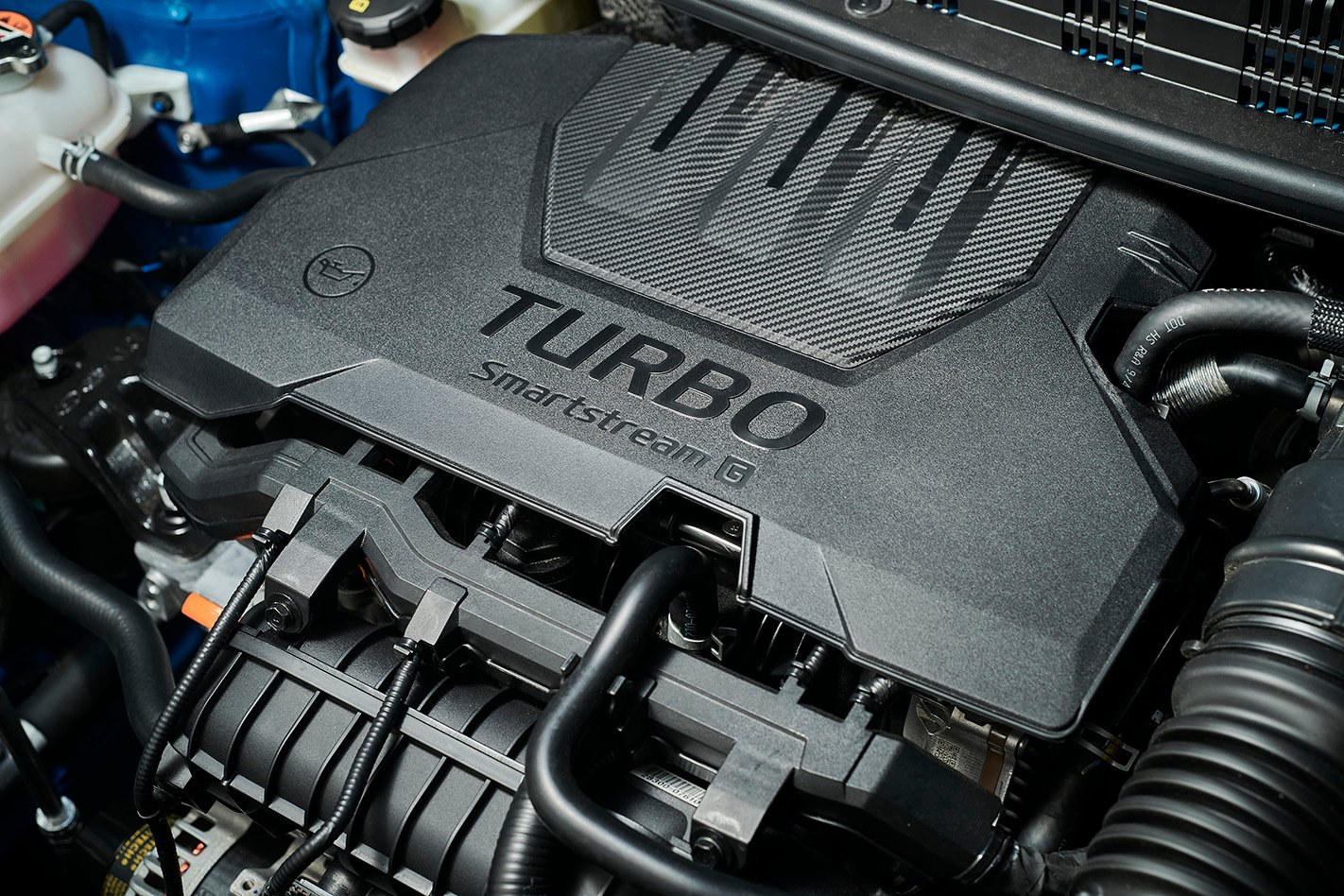
The Eco, Normal and Sport driving modes, which alter the dual-clutch transmission’s rev-mapping, come in handy for different conditions. Eco and Comfort are good for lower speeds but feel quite sluggish when you put the foot down as they’re a little too quick to change gears
Selecting Sport, however, allows the engine to rev up to 6000rpm before up-shifting, which means you get up to speed much quicker.

Not that you’ll break any speed records mind you – its 0-100 km/h time is just shy of 11 seconds but, it does give you nice push along at mid-revs which makes accelerating out of bends surprisingly enjoyable.
Driving mostly in Sport mode will mean exceeding the official combined fuel consumption of 5.4L/100km. During our week together I averaged 6.5L/100km.
The Stonic’s driveability is also enhanced by its steering. The serrated steering column has almost double the number of teeth (66) than the Rio, which makes the tiller feel noticeably responsive and direct without being too light.
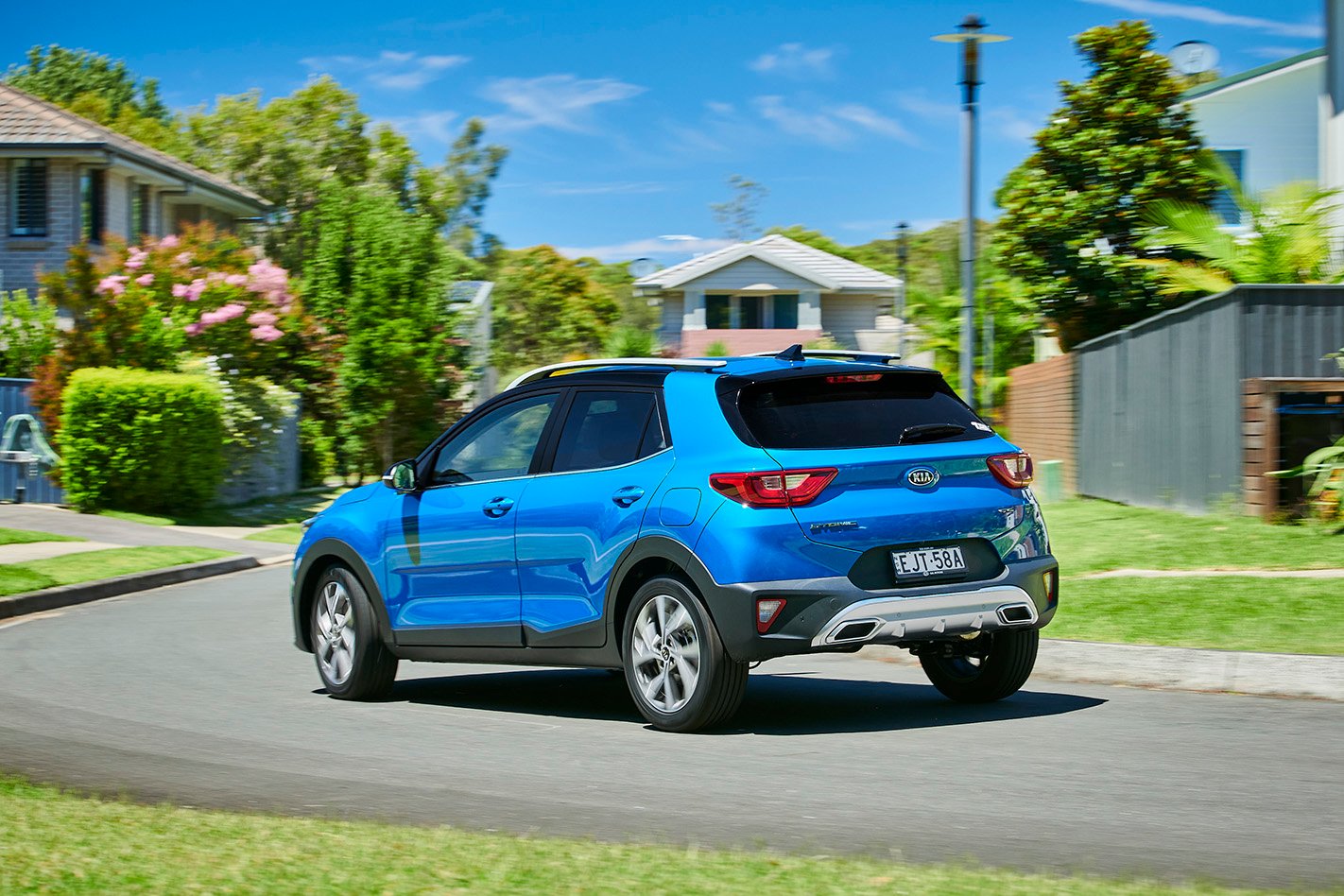
Again this has benefits in all kinds of conditions, from negotiating tight corners and parking spots in town to chasing apexes on winding roads.
Despite the GT-Line badge, Kia has refrained from tightening the suspension for sportier handling, like it with the Rio GT-Line.
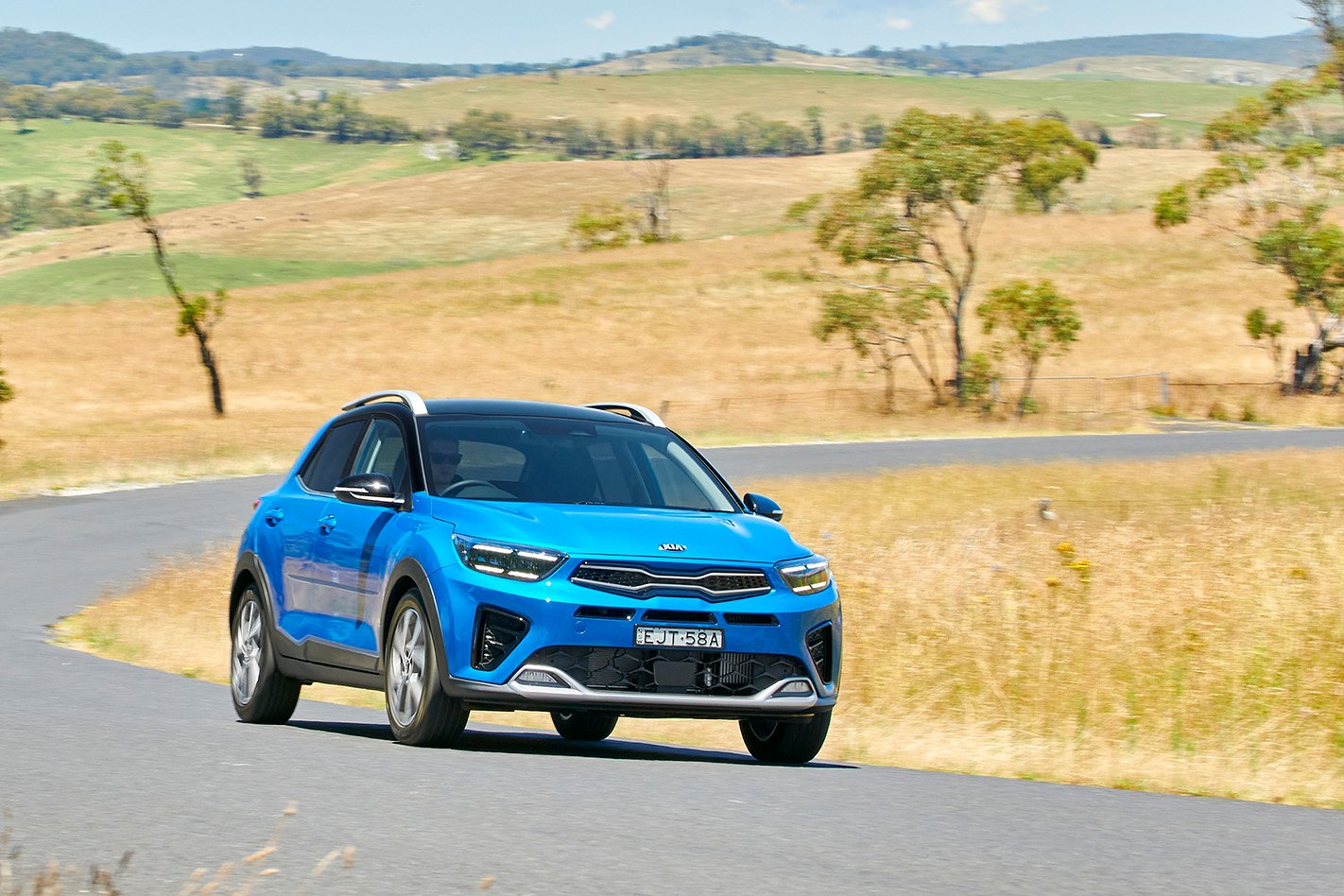
However, the Stonic’s suspension has been tweaked compared to the hatchback’s, with the torsion beam rear suspension pointing more upright than the Rio’s – fitted 8.4 degrees off vertical as opposed the hatch’s 25 degrees.
It has also been tuned for Australian conditions and I reckon the balance between dynamic handling and ride comfort is just about right on the biggish 17-inch alloys with 205/55 R17 Continental ContiPremium rubber.

It doesn’t exactly glide over road imperfections, but it feels composed and takes a decent-sized pot-hole to feel any jarring.
The biggest similarities between the Stonic are Rio become evident when you step inside.
The cabins are the same size and almost identical, though the Stonic’s dashboard has been raised a little to create more knee room, and the centre console doesn’t protrude as far back to make it easier to slide across the rear bench.
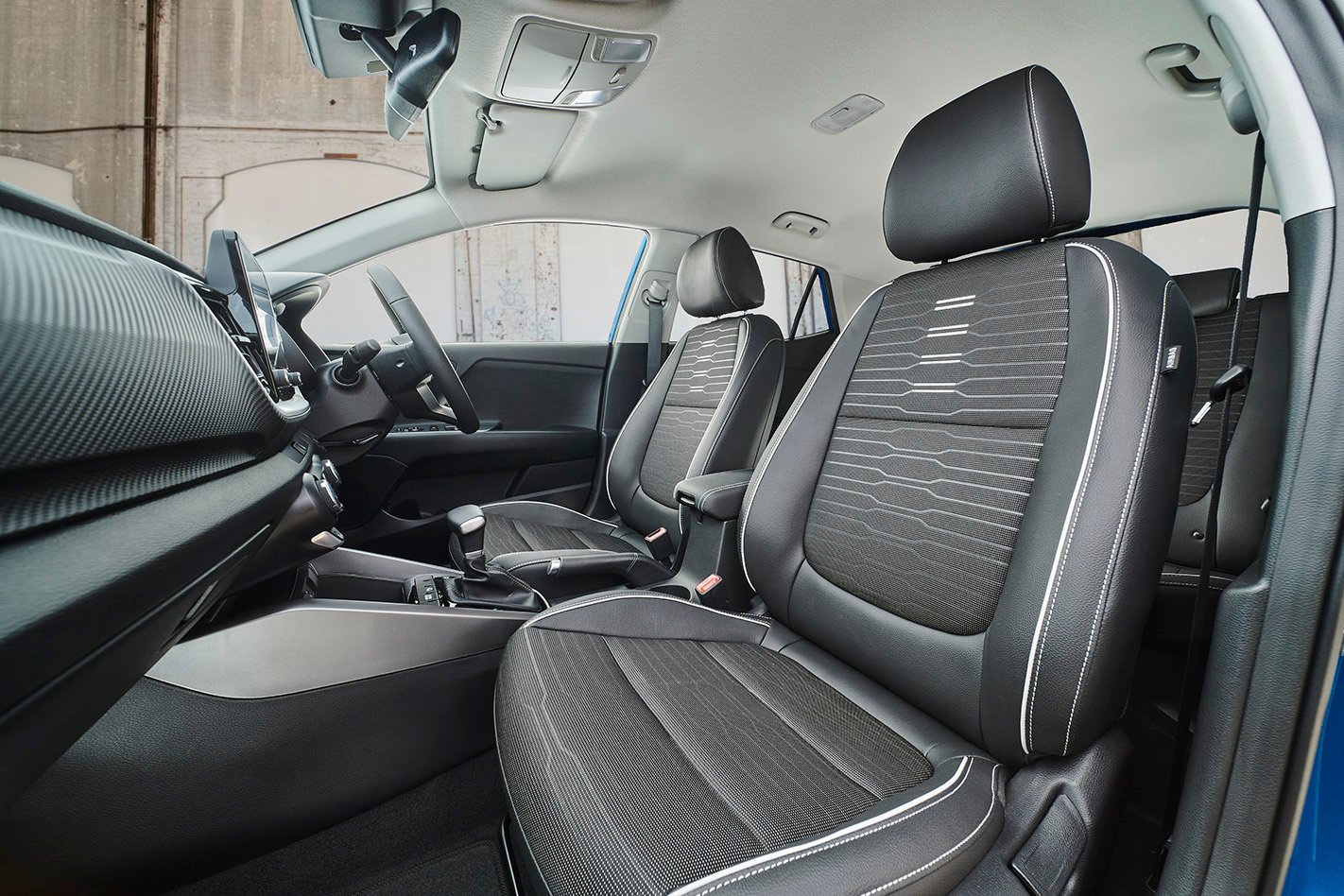
The interior is well put together, though there are the usual hard plastics on the doors, and it feels a lot more basic than the Seltos GT-Line.
The front seats are comfortable with soft but supportive backrests and good side bolstering. And while the driver’s seat only has basic manual settings it’s easy enough to find a good driving position.
The rear seats are also comfortable and offer reasonable legroom for a car this size as long as those in front aren’t too tall. It feels a little airier back there than in the CX-3 with the raised bench providing good forward and side vision.

The 60:40 split backrests open to a 353-litre boot, that’s 28 litres more than the Rio’s, 91 litres more than the CX-3s and just two litres shy of the Hyundai Venue’s. Putting both seats down lets you fit up to 1155 litres of stuff.
The boot space itself has a deep floor due to only having to fit a space-saver spare wheel underneath.
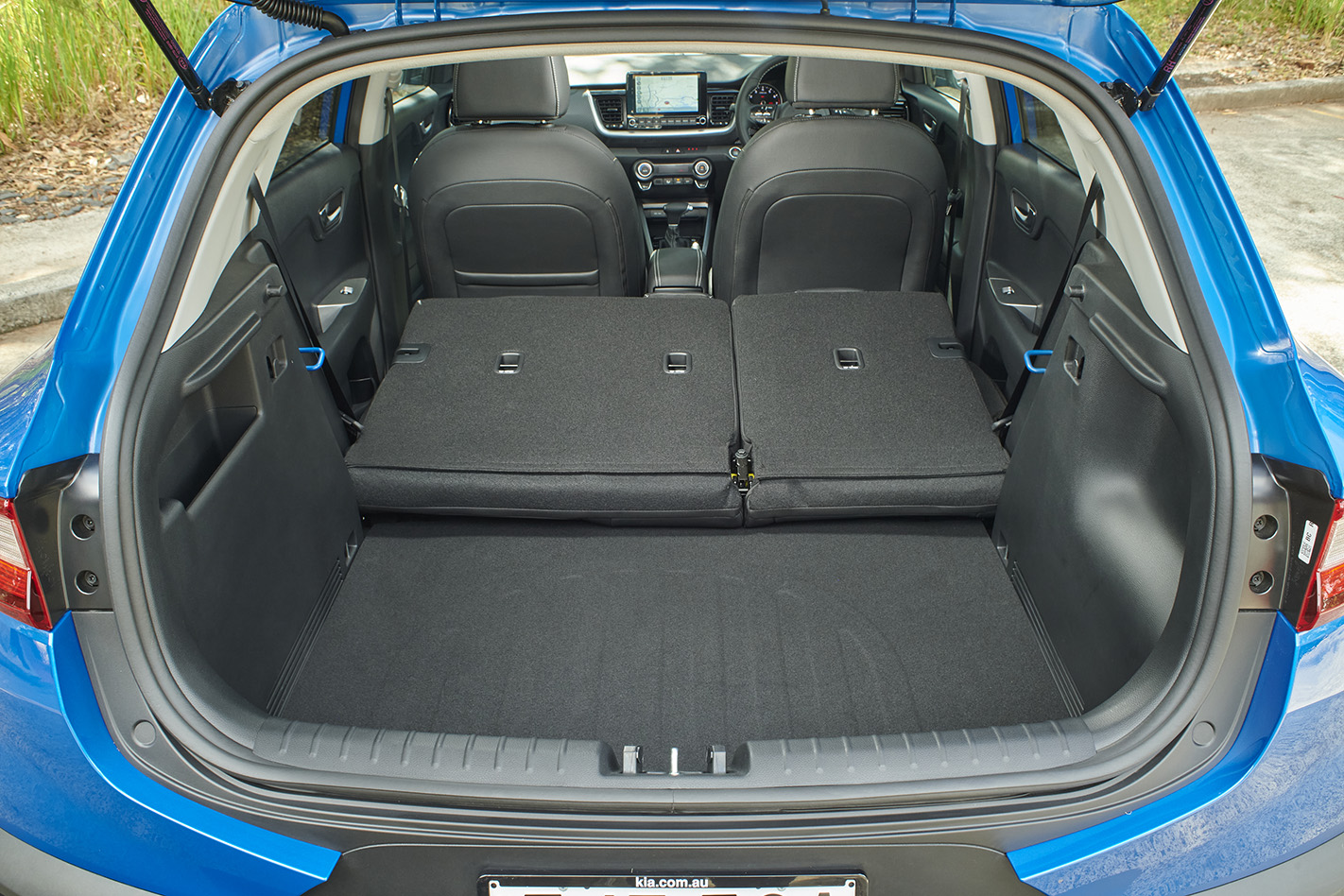
The Verdict
The Stonic has the form to go with its function. Like the Seltos, it looks like an SUV rather than a hatchback on stilts like other crossovers, with bold wheel arch surrounds, thick C-pillar and silver-painted rear diffuser and scuff plate.
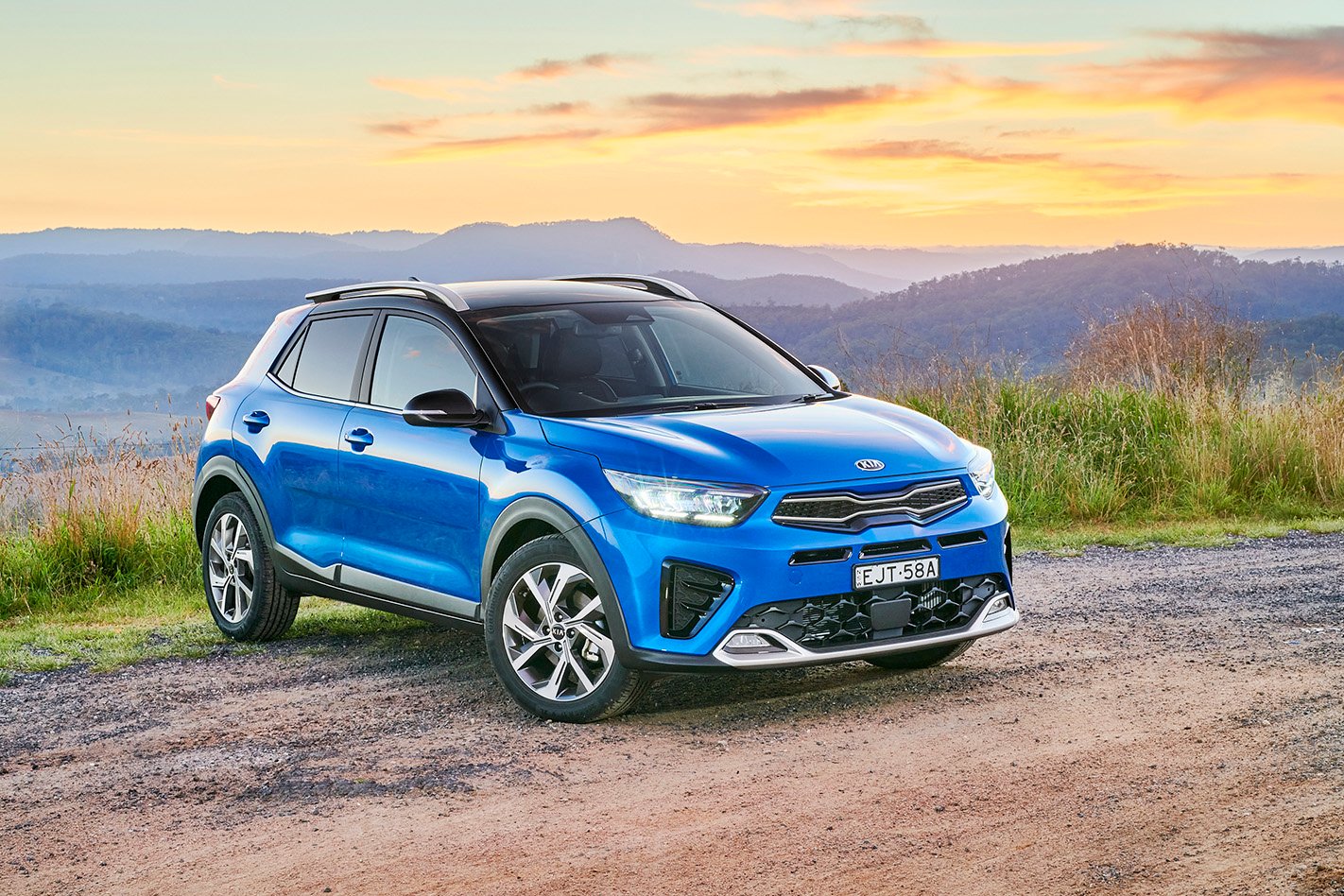
The GT-Line’s exterior bling enhances the look and, combined with the livelier turbocharged engine, has more than enough appeal over the more affordable Stonic Sport to justify the $4000 premium.
That said, the Stonic GT-Line’s biggest rival can be found in the same showroom in the form of the similarly-priced Seltos Sport that’s roomier, has a bigger 498-litre boot, a capable 2.0-litre four-cylinder engine and extras including a bigger 10.25-inch touchscreen, Digital radio (DAB+) and power-folding mirrors.
Still, if size doesn’t matter, this is a fun a little crossover.
Rating
Plus Looks, features, active safety, punchy turbo engine, boot space Minus Thrashy when taking off, lacks sophistication, lacks base variant’s wireless Apple CarPlay
Specs
Model Kia Stonic GT-Line Engine 998cc 3cyl, dohc,12v turbo Max power 74kW @ 4500-6500rpm Max torque 172Nm @ 1500-4500rpm Transmission 7-speed dual-clutch auto Weight 1227kg 0-100km/h 10.7sec (estimated) Economy 5.4L/100km Price $29,990 On sale Now




